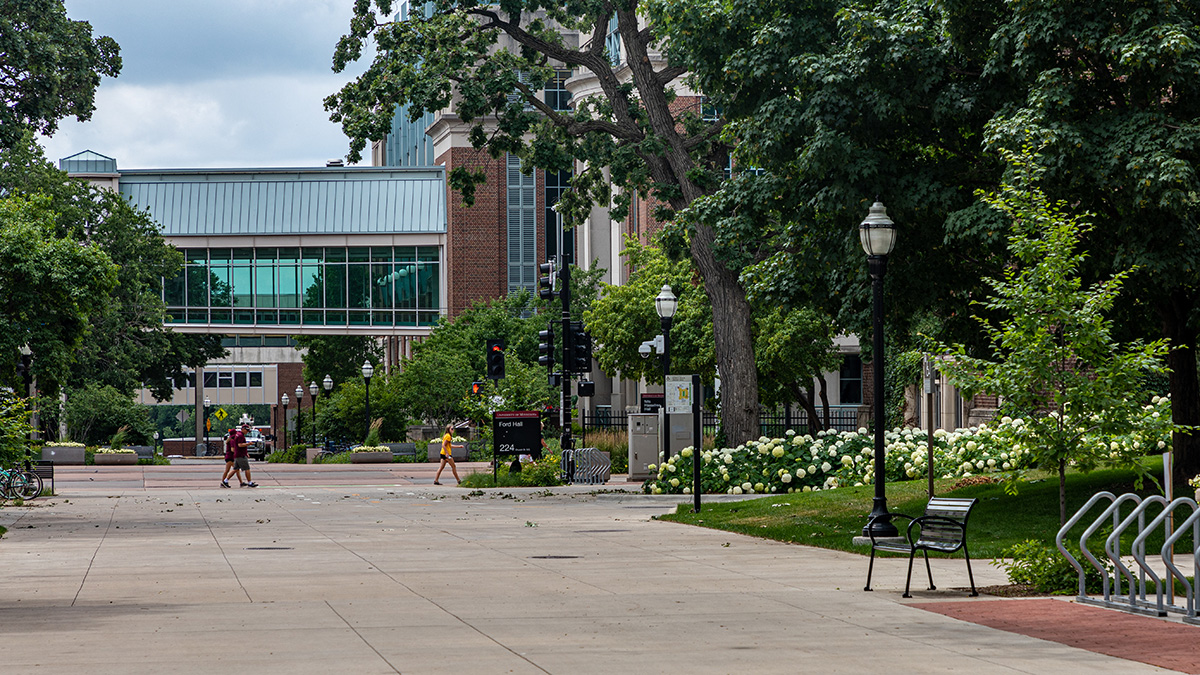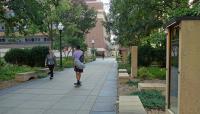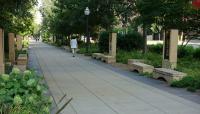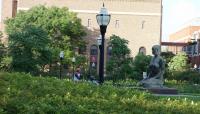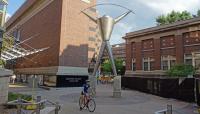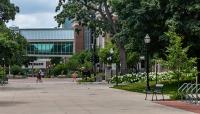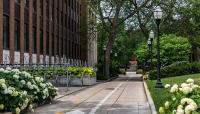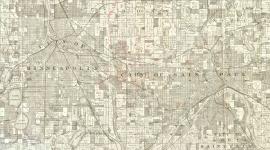Landscape Information
Scholars Walk is a physical commemoration of the achievements of faculty, students, and alumni of the University of Minnesota. The concept took shape in the 1990s as a way to mark the university’s sesquicentennial. The Board of Regents approved schematic plans in 2003, with the provision that the project be paid for and maintained with private funds. A nonprofit, volunteer-led group initiated a fundraising campaign to construct the walk, which was completed in 2006 under the supervision of Clinton Hewitt, campus planner at the University. The project’s most controversial issue was the decision not to use an apostrophe in the walk’s title.
Designed by Hammel, Green, and Abrahamson (HGA) with Gary Fishbeck as lead landscape architect, the 2,200-foot-long pedestrian walkway runs east-west across the University’s East Bank campus in Minneapolis from the historic Appleby Hall, overlooking the Mississippi River gorge, to the geode-shaped McNamara Alumni Center, designed by architect Antoine Predock and opened in 2000. The walkway’s four blocks are shaded by forty bur oak trees and other understory plantings and edged with stone benches and informal seating areas. To the east is Regents Plaza, dominated by the sculpture Platonic Figure (2001) by Andrew Leicester. Beyond the plaza, the Discovery Gallery transformed a once blighted alley and features the “Wall of Discovery” mural designed by Drew Sternal of LA ink. This section, highlighting prominent faculty and alumni, was upgraded in 2016 with copper and glass panels beneath an open trellis. The walk’s west end has plaques listing recipients of national, international, and university awards. To the north, a courtyard of the Physics and Nanotechnology Building has the sculpture Spannnungsfeld (2014) by Julian Voss-Andreae.




